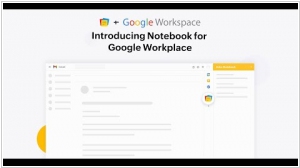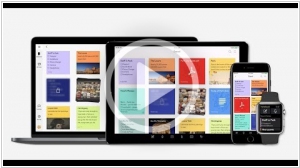Google Keep vs Zoho Notebook
August 23, 2023 | Author: Adam Levine
15
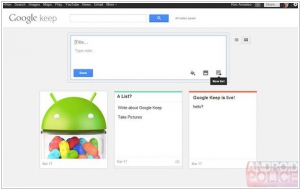
Cloud-based note taking service designed to help people keep track of their thoughts, scribbles and notes. With Keep you can quickly jot ideas down when you think of them and even include checklists and photos to keep track of what’s important to you. Your notes are safely stored in Google Drive and synced to all your devices so you can always have them at hand. Available on Android
6
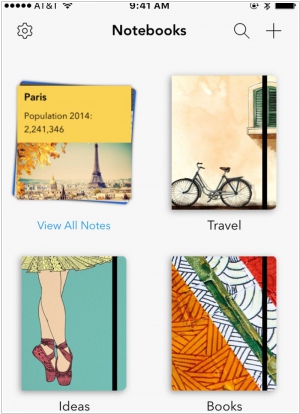
Free yourself from forgetting with mobile Zoho Notebook. Remember the title of that movie you keep forgetting. Or start outlining an unforgettable story. Don't get thumb tied. Record your ideas while driving. Tape meetings, lectures, and conversations. Turn your checklist into a checked-off list. Whether you're designing your office, or planning a wedding, capture what inspires you.
Google Keep and Zoho Notebook are two popular note-taking applications that offer distinct features and functionalities. Google Keep, being a part of the Google ecosystem, provides a simple and intuitive interface for creating and organizing notes. It emphasizes quick note capture, with features like color-coding, reminders, and voice recordings. Integration with other Google services and seamless synchronization across devices are notable advantages. On the other hand, Zoho Notebook offers a more visually appealing and customizable note-taking experience. It allows users to create multimedia-rich notes with images, audio, and sketches, providing a creative and versatile platform. Zoho Notebook also provides organization options like tags and notebooks.
See also: Top 10 Productivity software
See also: Top 10 Productivity software
Google Keep vs Zoho Notebook in our news:
2023. Google Keep finaly introduces text formatting support
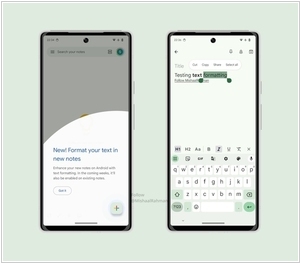
Google has finally introduced a much-needed improvement to its note-taking platform, Google Keep. When you click on the plus sign to access the extended options, a distinct underlined icon resembling the letter "A" appears in the toolbar. This icon provides access to various formatting choices, such as H1 and H2 for different heading sizes. Additionally, the "Aa" option conveniently returns the text to its default format. Other formatting features, including bold, italics, underlining, and strikethrough, are also available. Another new feature known as "version history" is now available in the web version of Keep. This feature allows users to review previous versions of text-based revisions, excluding any images. It's important to note that this version history feature is specifically designed for text-based notes and currently does not support notes containing images in any form.
2023. Google Keep adds version history
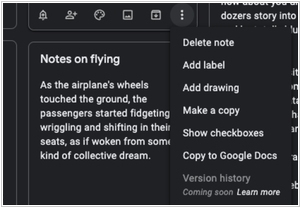
Google Keep, the free note-taking application from Google, allows users to quickly jot down notes that seamlessly sync with Gmail. However, in comparison to other popular note-taking apps, Keep has a notable limitation—it lacks the capability to display the version history of your notes. Consequently, any modifications made to a note become irreversible. The good news is that this is about to change. Upon visiting Keep's web version at keep.google.com, selecting a note, and accessing the three dots menu at the bottom, a forthcoming feature called "version history" can be observed. Although currently grayed out with a "coming soon" label, according to Google's help document, this option will soon enable users to download a text file containing previous versions of their notes or lists, providing a comprehensive view of changes made over time.
2022. Google is adding new Drive, Docs, Sheets, Slides and Keep optimizations for tablets
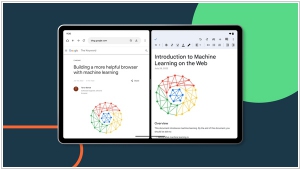
Google unveiled Android 12L earlier this year, aiming to enhance the usability of tablets. During the I/O conference, the company revealed its intention to optimize over 20 Google apps for larger screens. Today, Google has introduced several new features for Drive, Docs, Sheets, Slides, and Keep, taking a step towards fulfilling this commitment. The most noteworthy feature announced is the ability to effortlessly drag text or images between two Workspace apps that are open side-by-side. Google highlights that users can now drag content from apps like Chrome or Sheets and drop it directly into an existing document or spreadsheet cell. Additionally, in Google Drive, files can be swiftly uploaded by dragging and dropping them into the app. Furthermore, links to Drive files can be easily added by dragging the file into an open app like Keep.
2021. Zoho introduced Notebook for Google Workspace
Zoho Notebook is now compatible with Google Workspace, enabling seamless productivity without the need to switch between tabs. With this integration, you can effortlessly convert your emails into notes and vice versa in Gmail. Additionally, you have the ability to save File Cards from Notebook to Google Drive and vice versa. Jotting down your thoughts in Google Drive is now more convenient as you no longer have to switch tabs. Moreover, Zoho Notebook allows you to transform your ideas into documents and save them as note cards in Google Docs. Take advantage of the integration to effortlessly create calendar events, set reminders, and share your entries with friends using Google Calendar.
2020. Zoho Notebook intergartes with Slack
Zoho has recently unveiled its integration of Notebook with Slack. This integration allows you to effortlessly save your Slack messages as notecards in your Notebook, seamlessly share your thoughts from Notebook as Slack messages, quickly jot down important notes, and create notebooks—all directly within Slack. Enhance your productivity significantly by adding the Notebook app to your Slack workspace. Moreover, you have the option to create notebooks from Slack using the convenient /addnotebook command, enabling you to organize your notes for future reference. For more information on the capabilities of Notebook for Slack, simply use the /notebookhelp command.
2018. Zoho Notebook integrates with Zapier
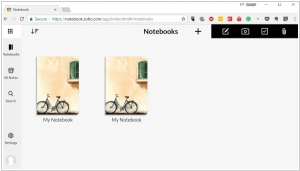
Zoho Notebook has now integrated with Zapier, allowing users to connect their Notebook account to a wide range of apps and automate tasks. With just a few simple clicks, you can integrate Notebook with over 1,000 apps by creating zaps. For instance, if you rely on Google Calendar to organize your schedule, the integration between Notebook and Google enables you to efficiently manage your time and work. When you create a calendar event in Google Calendar, Zapier automatically generates a note card in Notebook, ensuring that you have a pre-existing note ready for your thoughts when you attend the meeting or class. Furthermore, if you're looking for a convenient way to save your favorite messages, connecting Notebook with Slack through Zapier allows the messages you mark as favorites to be saved as notecards in the Notebook app. The Zapier integration expands the possibilities of Notebook and enhances its functionality by seamlessly connecting it with various popular apps and services.
2018. Zoho Notebook adds business card scanning, deep search, favoriting
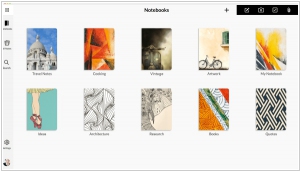
Zoho has announced its latest update for Notebook. While the app already had the capability to capture images and scan documents, it now also supports scanning business cards. To utilize this feature, users can open the Photo Card and switch to the "Business Card" option. Additionally, the new Deep Search feature allows users to search for objects and text within images across their notes and notebooks, similar to how they search through text-based notes. Another notable addition is the Favoriting feature, which enables users to create a stack of favorite notes on the home screen, allowing for easy access to important information or creating a master to-do list. To favorite a note, simply swipe left and tap the star icon. Furthermore, Zoho Notebook now allows users to easily link notes together. While editing a note, selecting the link option allows users to choose the note they wish to link to.
2018. Zoho Notebook adds encryption, night mode
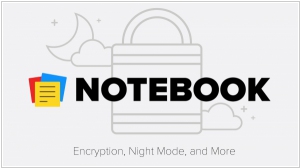
Zoho has introduced an update to Notebook that brings forth several new features. Notably, all the content stored in Notebook is now encrypted when at rest, ensuring utmost security for your notes and data. The addition of Night Mode aims to reduce eye strain while using Notebook in low-light environments. Furthermore, the developers have incorporated enhanced Apple Pencil support for iOS devices, providing a seamless and enhanced user experience. The update also introduces new formatting and styling options for your notes, along with support for Right-to-Left languages, including Arabic, Hebrew, and Urdu.
2017. Zoho launched Notebook for Web
Zoho launched the latest version of its note-taking application, Zoho Notebook 4.0, which introduces Notebook for Web. Additionally, Smart Cards have been introduced to intelligently format content across devices. Furthermore, the update includes document scanning, a redesigned Photo Card, enhanced drag and drop functionality for Notebook on iPad Pro, and various other cross-platform enhancements. With Notebook for Web, all notes and notebooks can now be accessed online. Users can create Text, Checklist, Photo, and File Cards, and easily replace the cover of a custom Notebook by dragging and dropping an image from their desktop. Additionally, Photo and File Cards can be created in Notebook by simply dragging and dropping files from the desktop. Notes can be organized into groups, moved, and copied to different notebooks, while both notebooks and notes can be secured with a passcode. The web app is automatically accessible for users with a Notebook account.
2017. Zoho Notebook 3.0 adds File Card, Web Clipper for Safari, Import from Evernote
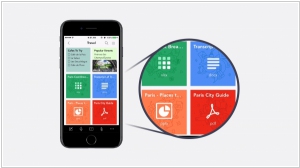
Zoho has introduced an update to its Notebook app, bringing exciting new features. The latest addition is the File Card, which allows users to add and sync various file types such as PDFs, documents, spreadsheets, and more directly to Notebook. The File Card enables file integration from both online and offline storage applications. Notably, all files added to Notebook are treated as individual note cards that can be grouped together, providing a more organized approach compared to traditional attachments. Additionally, the integration with Zoho Docs, the document management application available on the web and mobile, allows seamless opening of these files. Furthermore, Zoho has expanded the Notebook Web Clipper to support Safari, enabling users to capture and save web content easily. Lastly, users now have the ability to import their notes and attachments from Evernote using the new import tool.

